Search results
Irish Surname Resources
July 23, 2012 by ramona
Filed under Articles, Genealogy and Surnames, Introduction to Genealogy, Latest News
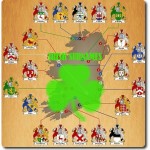 Are you an O’Mally or an O’Neil?
Are you an O’Mally or an O’Neil?
If you are a genealogy beginner in search of Irish surname resources you are in luck because you are among the millions of fortunate family tree fanatics who can draw from a wide variety of genealogy resources.
To get started you might want to check out this fantastic Irish Surname Infographic which gives an at-a-glance overview of the top twenty most common Irish surnames.
Other information you can find on the infographic include:
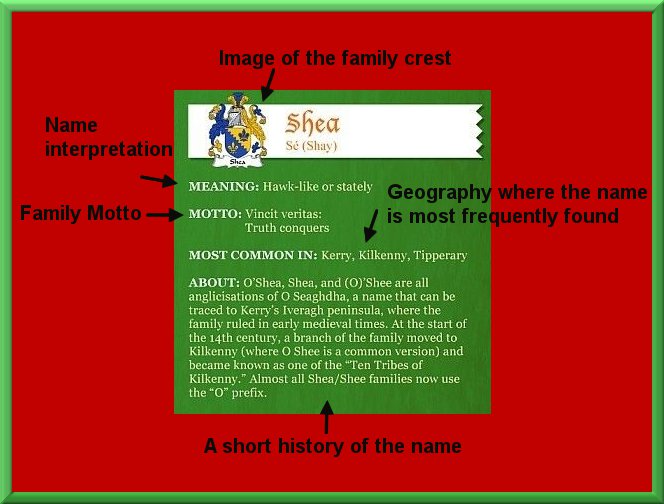
Another fantastic resource to check out is Irish Central an online magazine packed with all things Irish including an in depth article explaining the top 100 Irish surnames.If you already know about your Irish surname and you are ready to start digging deep for your Irish roots try stopping by Irish Genealogy where you can search almost three million pre-20th century Church records for FREE.
Want more resources? Try Genuki Ireland for links on where to research:
INFORMATION RELATED TO ALL OF IRELAND
|
|
Before you get started on your Irish family history research, don’t forget to download your Research tracking forms and Family Tree Charts. Available with your 30-Day FREE TRIAL MEMBERSHIP to Genealogy Beginner
Would the Real Mr. “Whelan” (“Whalen”?) Please Stand Up
April 14, 2011 by Chris
Filed under Articles, Genealogy and Surnames, Genealogy for Beginners, Introduction to Genealogy
 According to Irish surname specialists, the surname “Whelan” is the 79th most common surname in Ireland. Thousands of Irish immigrants named “Whelan” came to America in the last two centuries. A large number of them saw their family name recorded “Whalen” by government immigration and census officials on government forms. Consequently, when searching for your long lost Irish ancestor “Joseph Whelan” or “Josephine Whelan”, be sure to look for “Whalen” also. Surname spelling variations occur with other Irish surnames also. To my bemusement, my global search for the surname “Whalen” for the entire country of Ireland in the Griffiths Valuation Survey (1840 – 1860) database produced zero households, and in the 1901 Irish census only 9 households.
According to Irish surname specialists, the surname “Whelan” is the 79th most common surname in Ireland. Thousands of Irish immigrants named “Whelan” came to America in the last two centuries. A large number of them saw their family name recorded “Whalen” by government immigration and census officials on government forms. Consequently, when searching for your long lost Irish ancestor “Joseph Whelan” or “Josephine Whelan”, be sure to look for “Whalen” also. Surname spelling variations occur with other Irish surnames also. To my bemusement, my global search for the surname “Whalen” for the entire country of Ireland in the Griffiths Valuation Survey (1840 – 1860) database produced zero households, and in the 1901 Irish census only 9 households.
Lesson Learned: If at first you don’t succeed in finding an ancestor with one Irish surname spelling, try a slight variation of that surname spelling to see what you might find.
Let us know what Irish surname spelling variations that you’ve encountered in your research and post them here.
See more Irish family history articles and lessons learned in earlier posts below and in the archives.
(This posting is from The Ballycastle Blog: Irish Genealogy and More.)
An Irish Culinary Tradition – Edible Seaweeds
September 14, 2008 by Chris
Filed under Articles, Family History, Preserving Your Family Tree, Public Records
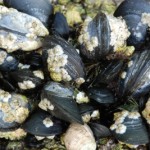 I grabbed this recipe from The Ballycastle Blog: Irish Genealogy and More. Found it so interesting I thought I’d share it with you. The time of the Great Hunger or (The Gotta Mór); Ireland 1845-7, was a bleak time in Irish history. With widespread crop failures and disease that devastated an already weakened people, seaside communities could turn to the sea and thus managed a little better. While men fished, women with their children in-tow hunted the beaches during low tides gathering the numerous varieties of shellfish and seaweeds. A species of seaweed known as Sleabhach which grows from fall to spring on rocks became a staple.
I grabbed this recipe from The Ballycastle Blog: Irish Genealogy and More. Found it so interesting I thought I’d share it with you. The time of the Great Hunger or (The Gotta Mór); Ireland 1845-7, was a bleak time in Irish history. With widespread crop failures and disease that devastated an already weakened people, seaside communities could turn to the sea and thus managed a little better. While men fished, women with their children in-tow hunted the beaches during low tides gathering the numerous varieties of shellfish and seaweeds. A species of seaweed known as Sleabhach which grows from fall to spring on rocks became a staple.
This seaweed is something many of us are familiar with in sushi dishes; you might know it as Nori; today a major Japanese crop worth millions of dollars.
Try out this old Irish recipe’ and impress your Japanese friends.
Sleabhach agus Ruacháin
(Slough-uck a-guss Roo-caw-in)
Nori and Cockles
Ingredients per individual serving
3-4 oz. Nori
15 – 20 Cockles
Butter
Milk.
Cook the Nori in milk for an hour. Cook the cockles in their own juice. If the Nori sheets have not broken up put them in a food-processor for a few moments Serve with a Nori mound in the centre, pour over it a little of the cockle juice and top it with a generous blob of butter. Surround the Nori with the cockles and serve.
I have never seen Nori or the inside of a sushi restaurant, but believe it should work. The original is delicious and cockles go particularly well with “Sleabhach” though other types of shellfish were also used. Perhaps someone who tries the recipe might post his or her culinary review.
See additional Irish family history articles and lessons learned in earlier posts below and in the archives.
This posting is from The Ballycastle Blog: Irish Genealogy and More.
…
Where to Next?
An Irish Culinary Tradition – Edible Seaweeds
September 11, 2008 by Chris
Filed under Blank Family Tree
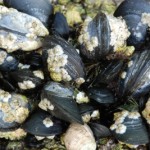 I grabbed this recipe from The Ballycastle Blog: Irish Genealogy and More. Found it so interesting I thought I’d share it with you.
I grabbed this recipe from The Ballycastle Blog: Irish Genealogy and More. Found it so interesting I thought I’d share it with you.
The time of the Great Hunger or (The Gotta Mór); Ireland 1845-7, was a bleak time in Irish history. With widespread crop failures and disease that devastated an already weakened people, seaside communities could turn to the sea and thus managed a little better. While men fished, women with their children in-tow hunted the beaches during low tides gathering the numerous varieties of shellfish and seaweeds.
A species of seaweed known as Sleabhach which grows from fall to spring on rocks became a staple. This seaweed is something many of us are familiar with in sushi dishes; you might know it as Nori; today a major Japanese crop worth millions of dollars.
Try out this old Irish recipe’ and impress your Japanese friends.
Sleabhach agus Ruacháin
(Slough-uck a-guss Roo-caw-in)
Nori and Cockles
Ingredients per individual serving
3-4 oz. Nori
15 – 20 Cockles
Butter
Milk.
Cook the Nori in milk for an hour. Cook the cockles in their own juice. If the Nori sheets have not broken up put them in a food-processor for a few moments Serve with a Nori mound in the centre, pour over it a little of the cockle juice and top it with a generous blob of butter. Surround the Nori with the cockles and serve.
I have never seen Nori or the inside of a sushi restaurant, but believe it should work. The original is delicious and cockles go particularly well with “Sleabhach” though other types of shellfish were also used. Perhaps someone who tries the recipe might post his or her culinary review.
See additional Irish family history articles and lessons learned in earlier posts below and in the archives.
(This posting is from The Ballycastle Blog: Irish Genealogy and More.)
…
Where to Next?
Blank Family Tree with Step-by-Step Instructions
…
Broaden Your Ancestor’s Name Search
September 11, 2008 by Chris
Filed under Articles, Genealogy and Surnames, Introduction to Genealogy, Lesson 5 Articles, Public Records
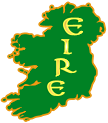 To trace the Irish origins of a client’s Irish grandfather, I recently searched a number of government record databases. The Irish grandfather’s name was Thomas Hogan. Feeling confident in pinpointing the specific person, I entered the first name, Thomas, and the family name (surname), Hogan, in the search fields of the searchable database. My confidence quickly diminished, when, unfortunately, the search results did not produce the one and only Thomas Hogan I was looking for. Being patient and persistent, I took a chance and broadened the search by simply entering the family name (surname), Hogan, in the search field.
To trace the Irish origins of a client’s Irish grandfather, I recently searched a number of government record databases. The Irish grandfather’s name was Thomas Hogan. Feeling confident in pinpointing the specific person, I entered the first name, Thomas, and the family name (surname), Hogan, in the search fields of the searchable database. My confidence quickly diminished, when, unfortunately, the search results did not produce the one and only Thomas Hogan I was looking for. Being patient and persistent, I took a chance and broadened the search by simply entering the family name (surname), Hogan, in the search field.
Although, as you can guess, this wider search produced hundreds of records, I hoped that it might uncover the correct Thomas Hogan.
Eureka! Lo and behold, the “Hogan only” search produced a record for a “Thos. Hogan”, the correct one, the grandfather I was looking for. The lesson learned: before giving up and suspending your search for a specific first name-last name combination, broaden your search to include an abbreviated first name. You may ultimately find the person you are looking for!
Footnote: To quicken the creation of a written form or record, a government official sometimes abbreviated the first name of a person in that form or record. Today, searchable electronic databases contain those same abbreviations.
See more Irish family history articles and lessons learned in earlier posts below and in the archives.
…
Where to Next?
Blank Family Tree with Step-by-Step Instructions
…
